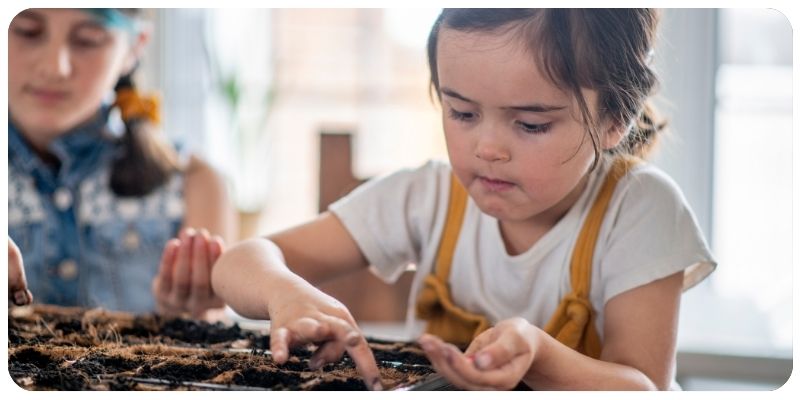
How to Grow Plants from Seeds Indoors
Starting plants from seeds indoors is a rewarding way to grow your own garden from scratch. Not only is it cost-effective, but it also allows you to grow a wider variety of plants than you might find at a nursery. This beginner's guide will walk you through the process of growing plants from seeds indoors, from choosing the right seeds to transplanting seedlings outdoors.
1. Choosing the Right Seeds
The first step to growing plants from seeds is selecting the right type of seeds. Some plants, like tomatoes, peppers, and herbs, are well-suited for indoor seed starting. Other plants may not perform as well indoors, so it's important to choose seeds that are known to thrive in a controlled environment.
Popular Plants to Grow Indoors from Seeds
- Tomatoes: Tomato seeds are easy to start indoors, and the seedlings grow quickly when provided with enough light and warmth.
- Peppers: Both sweet and hot peppers are perfect candidates for indoor seed starting.
- Herbs: Basil, parsley, cilantro, and thyme are common herbs that are easily grown from seed indoors.
- Leafy Greens: Spinach, lettuce, and arugula can be started indoors and thrive in small containers.
- Flowers: Many annual flowers like marigolds and zinnias can be grown from seeds indoors for a vibrant garden later in the season.
2. Preparing Your Growing Space
Once you've chosen your seeds, the next step is to prepare your indoor growing space. Seeds need warmth, moisture, and light to germinate and grow into healthy seedlings. A windowsill with plenty of sunlight or a grow light setup is ideal for most seeds.
Essential Growing Supplies
- Seed Trays or Containers: Use seed trays, egg cartons, or small pots to start your seeds. Make sure they have drainage holes to prevent waterlogging.
- Seed-Starting Mix: Use a sterile, lightweight seed-starting mix. Avoid regular potting soil, which may be too dense for young seedlings.
- Grow Lights: If natural light is insufficient, invest in grow lights to provide the necessary light spectrum for seedlings.
- Humidity Dome: A plastic cover or humidity dome can help retain moisture and create a greenhouse-like environment for your seeds.
3. Planting the Seeds
Now that your space is ready, it's time to plant your seeds. Follow the instructions on the seed packet for the correct planting depth and spacing. In general, seeds should be planted at a depth of two to three times their diameter.
Steps for Planting Seeds
- Fill the Containers: Fill your seed trays or pots with seed-starting mix, leaving about half an inch from the top.
- Sow the Seeds: Place the seeds on top of the soil and cover them with a thin layer of the mix, depending on the seed size.
- Water Gently: Use a spray bottle or a gentle stream of water to moisten the soil without disturbing the seeds.
- Label Your Seeds: Be sure to label your containers with the name of the plant and the date you planted the seeds.
4. Caring for Seedlings
Once your seeds have sprouted, they’ll need proper care to grow into strong, healthy plants. Provide plenty of light, keep the soil moist but not waterlogged, and make sure the temperature remains warm enough for optimal growth.
Key Care Tips for Seedlings
- Light: Place your seedlings in a sunny spot or under grow lights for 12-16 hours a day to prevent leggy growth.
- Water: Keep the soil consistently moist but not soaking wet. Use a spray bottle to avoid over-watering young seedlings.
- Air Circulation: Good airflow prevents diseases like damping-off, which can kill seedlings. Use a small fan to improve air circulation if needed.
5. Transplanting Seedlings
After your seedlings have developed a few sets of true leaves, it's time to transplant them into larger pots or outdoors, depending on your climate and the type of plant.
How to Transplant Seedlings
- Harden Off the Seedlings: Before transplanting, gradually acclimate your seedlings to outdoor conditions by exposing them to sunlight and outdoor air for a few hours each day over the course of a week.
- Prepare the New Container: Fill the new pot or garden bed with well-draining soil. Dig a hole deep enough to accommodate the root system.
- Transplant Gently: Handle the seedlings by their leaves, not their stems, to avoid damaging them. Place them in the hole and cover the roots with soil, then water thoroughly.
Conclusion
Growing plants from seeds indoors is a simple and rewarding way to start your own garden. With the right seeds, supplies, and care, you can watch your plants grow from tiny seeds to full-grown beauties. By following this guide, you’ll be well on your way to cultivating a healthy, thriving indoor garden.